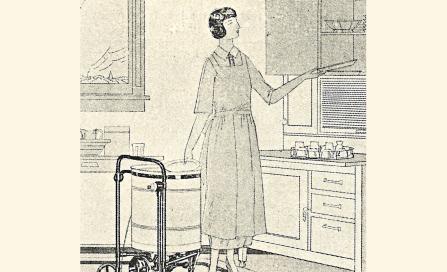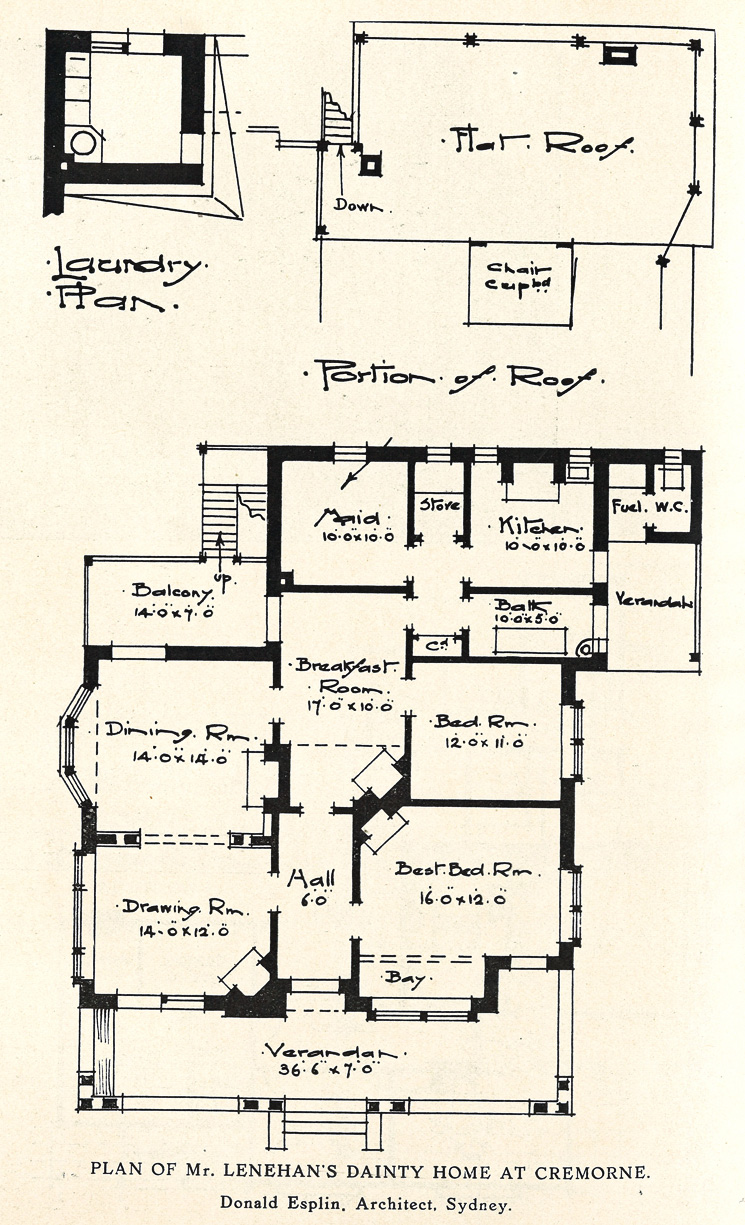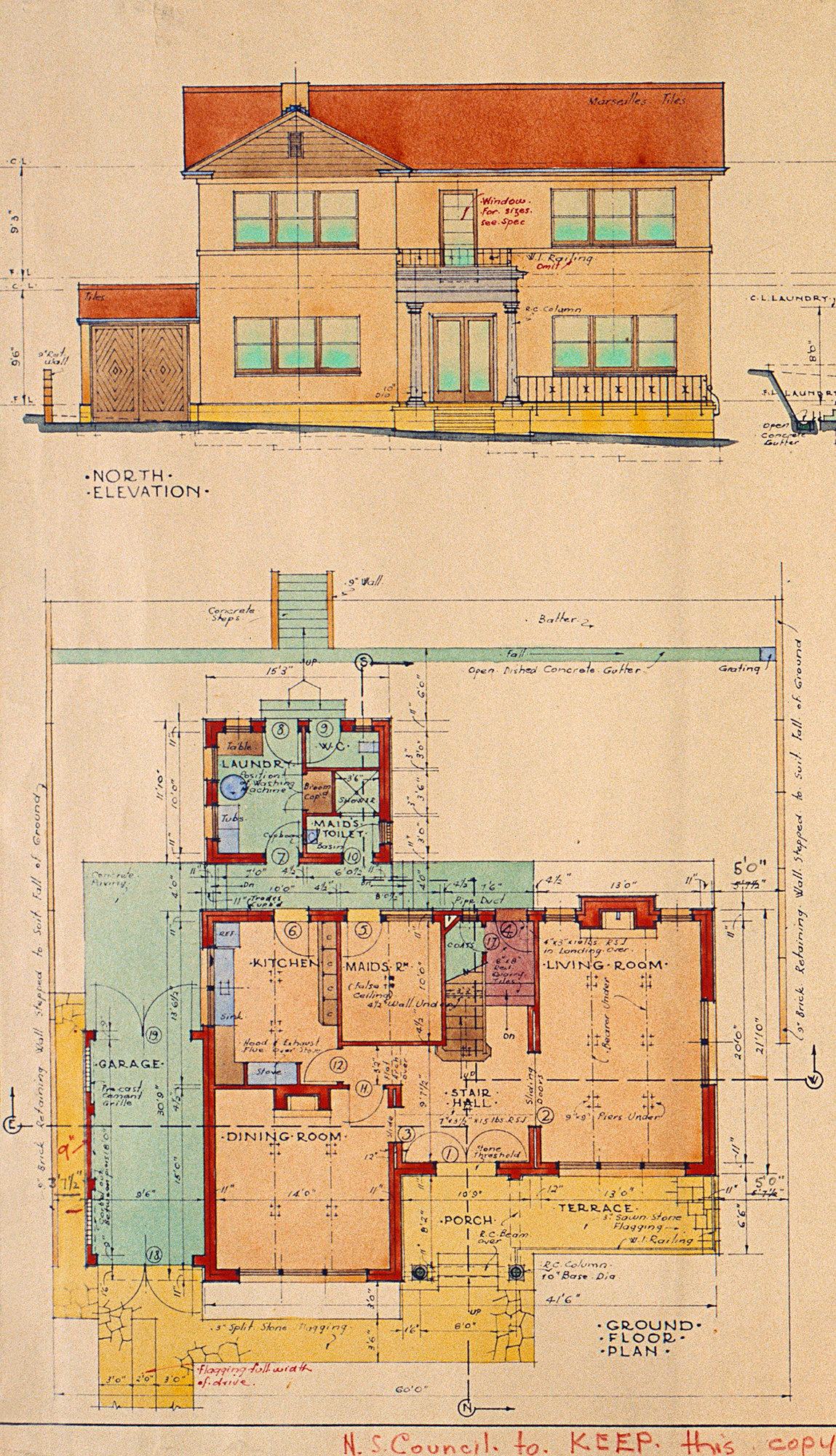|
Domestic helpBy the end of the 19th century class divisions and social stratification were less obvious in Australia than in Britain.But it was still common to find servants in the middle and upper class Sydney homes well into the 20th century. Many of these people were ‘live-in’ maids. The history of domestic service in New South Wales is a long and difficult one that begins with the convict origins of the colony. For the first 50 years prisoners were assigned as servants to land owners; a situation that prompted the visiting scientist Charles Darwin to reflect pessimistically in 1836 both upon the 'odious' relationship between a master and servant who could legally be 'flogged' upon the master's word and the 'vile' influence of female convict servants upon the children of the household. The collective memory of this arrangement, coupled with the sense of egalitarianism that prevailed in Australia at the end of the 1800s, contributed to ongoing tension between domestic servants and their mistresses or masters. The ‘growing antipathy’ to service work and the difficulty of finding ‘good help’ underpinned what was frequently called the ‘domestic service problem’. Sydney’s newspapers carried regular commentary on the issue from the 1880s. In September 1904 the Sydney Morning Herald noted that ‘Domestic Service is a perennial subject for discussion’. Employers frequently complained about the incompetence of their servants, while those in service resented the long hours, poor pay and rudeness of their ‘betters’. One correspondent referred to her mistress as ‘a cross crabby creature who never thinks anything is right.’ (Evening News, 2 March 1910) Another, who was apparently a British immigrant, noted that Australia was no ‘paradise’ for servants. She received £1 a week and was expected to work from 6 in the morning until 10pm (Evening News, 23 May 1911). By the second half of the 19th century, ‘domestic service’ was very much a female occupation. Gradually the word ‘servant’, with its connotation of convict servility, was replaced by ‘maid’. But the change in terminology did not erase the stigma or alleviate the hard work. Few wanted to be servants or maids, for the job carried little respect. ‘A woman can live down any “past”’, remarked the Worker newspaper in March 1911, ‘unless at some time or other she has been a domestic servant’. In Britain such service might entail an expectation of training and an understanding of social codes, but frequent complaints by Australian employers suggests the work here was often, if not ‘unskilled’, then at least self-taught. And Australian servants, it seems, were not as immediately respectful as their counterparts in Britain. Not surprisingly, many of the grand houses of 19th century North Sydney were built with servants’ quarters. 'Graythwaite' had a two-storey kitchen wing with three rooms above for house staff. The stables accommodated a groomsman. The presence of numerous domestic staff was still apparent in large early 20th century homes. 'Brent Knowle', designed in 1914, had three maid’s rooms and a ‘man’s room’ – probably for the person who looked after both the horses and the horseless carriage, for the house had one of the first car garages in North Sydney. But it is clear that employment of a maid, however fraught, was typical through to World War Two. Beryl Graham’s reflections of her pre-war family house from the perspective of a middle class household are interesting. The bungalow was built on the Berry Estate, having been designed by Donald Esplin and approved by Howard Joseland so that it met the Estate standard. The ‘smallest room, least sunny, was for the live-in maid almost everyone could then afford’. The many families who lived in the small cottages of the nearby Euroka Estate had neither the money nor the space for a live-in maid. They may, indeed, have provided the domestic labour for the larger homes of the area. Some of those who ‘served’ in North Sydney did receive training. Margaret Tucker was one of the hundreds of Aboriginal girls who were 'educated' for domestic service at the notorious Cootamundra Domestic Training Home for Aboriginal Girls which opened in 1911. Girls there were treated harshly with the assumption that their Aboriginality qualified them for nothing more than service. The young Margaret was one of many employed on the North Shore. She worked for a wealthy grazier’s family who owned a city house in Neutral Bay: ‘I used to take the children for walks, or rather they used to take me, because I didn’t know my way about’. Her employers were ‘kind’ but Margaret’s status as a servant was never in doubt, so that she even referred to the children in her care as ‘Master’ and ‘Miss’. Margaret Tucker ran away from her employers and was punished by the Aboriginal Protection Board. She became a prominent Aboriginal rights activist in the 1930s. (If Everyone Cared: The Autobiography of Margaret Tucker, 1983) Maids’ rooms were a feature of larger houses built as late as the 1940s. When the Patchell family engaged Rupert Minnett and Cullis-Hill to design their two-storey home at 55 Crows Nest Road, it had a maid’s room and, indeed, a maid’s toilet. The layout for this modern North Sydney house thereby followed a long-held convention – born in the grand homes of Britain – by which servants’ quarters were located near the working areas of the home, typically the kitchen and the laundry, and the house was divided into working and living spaces minimising contact between servant and employer. Gradually, with the rising cost of labour and the introduction of ‘labour saving’ devices such as vacuum cleaners and washing machines, the burden of maintaining the home fell exclusively to the ‘woman of the house’ for all but the wealthiest of families. This expectation was reinforced by the practice that saw married women largely excluded from paid employment until the 1970s. With the end of this discrimination, and the availability of regular employment for married and unmarried women, there has been an increase in the number of ‘cleaners’ paid to service homes across Sydney. Sometimes ‘carers’ or ‘nannies’ are employed to look after children. In Australia the terms ‘maid’ or ‘servant’ carry the stigma of subservience from another era and are now rarely used. Audio: Listen to Jean Blundell and Joan Smith talk about social divisions and domestic service in North Sydney in the early 1900s. Merle Coppell Oral History Collection OH100 |
|






